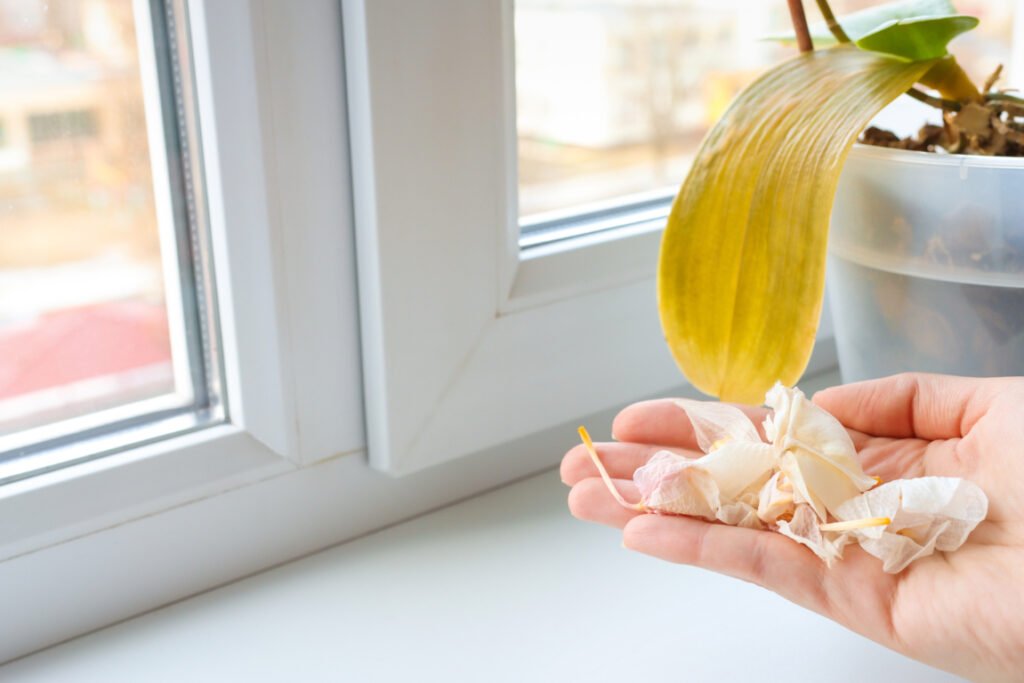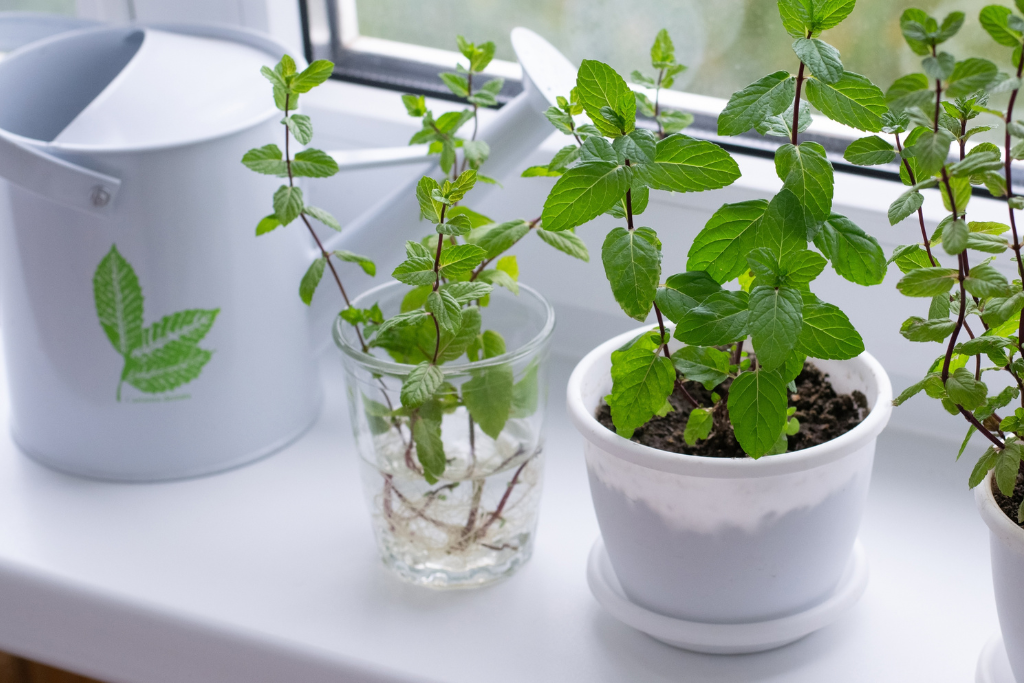
Mint is a vigorously growing herb that comes in countless different varieties. It’s essential for any herb garden and will grow just as well potted up inside by a sunny window. The fresh menthol fragrance it exudes will freshen up your home and help to keep away pests and critters in the garden.
Mint leaves are a wonderful addition to numerous meals and they make a delicious tea that can soothe your stomach and support a satisfying slumber. The plant is hardy, resilient and grows robustly, developing into a strong shrubby perennial that returns year after year.
The benefits and advantages of mint are apparent, so of course you want to keep your plants perky and happy. And in order to get the most out of your mint plant, we’re going to answer one of the most frequently asked questions: How often should I water my mint?
For first-time mint gardeners, it can be a tricky chore to get just right. That’s why we’re going to examine how to water mint in every environment: In the garden, indoors, outside in containers, as well as seeds and seedlings. Consider this article your complete guide to watering mint plants.
So grab your watering can and let’s get down to it!
Meeting Mint’s Watering Needs
Mint generally thrives in moist conditions and will do well with plenty of water. However, your mint should not be left to stand for extended periods of time in damp soil. Your garden soil or potting medium should be well-draining. Another couple of points to keep in mind:
- Mint kept in containers will need more frequent waterings as they will tend to dry out more quickly.
- Mint in the garden should receive 1-2 inches of water per week.
- Water deep and thoroughly, letting the soil dry out before the next watering.
- Try to avoid getting water on the leaves, as this could lead to burning or the spread of disease.
Now let’s get into the specific details of different growing environments.
Watering Mint in the Garden
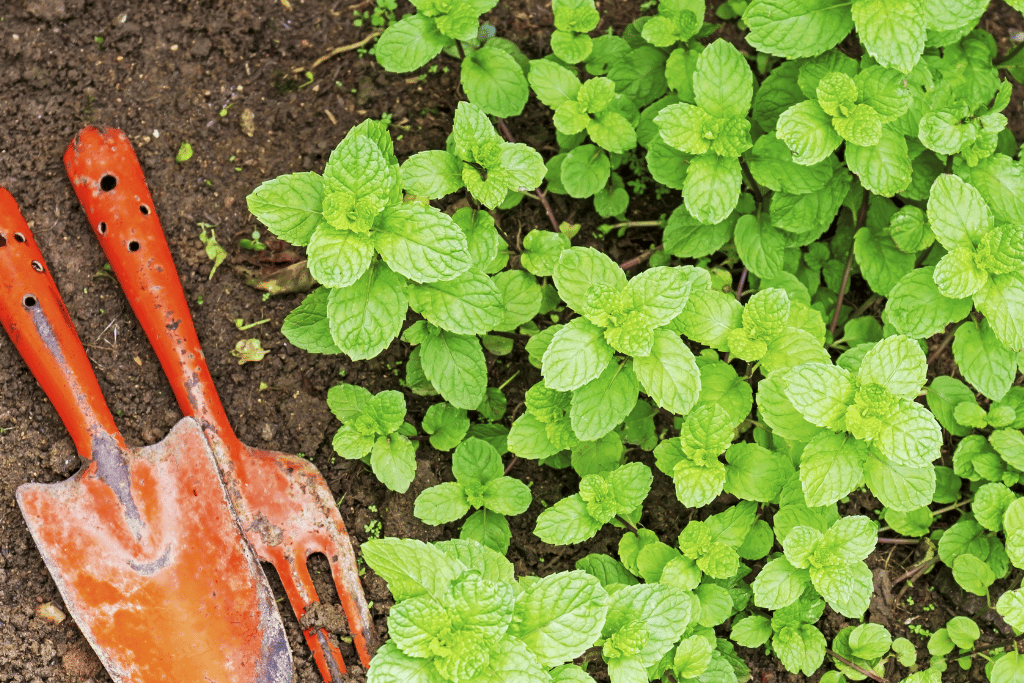
The biggest factor to consider when growing mint outside in your garden is the weather.
You’ll have to water frequently if there are drought conditions during the summer months. In extreme cases, your mint may need to be watered every day. If the top inch of the soil surrounding the plant is dry, it’s safe to give it a thorough watering.
If the weather is cool and rainy, or your mint is growing in shade, it will require less frequent watering. Based on the temperature, sun exposure and amount of rain received you can go without water for a few days, up to a week or more. To determine if you need to water dig into the soil with your finger or use a moisture meter.
As mentioned above, only water your mint plants when the top inch of the soil has dried out. Whether that’s every day or once a week, the moisture level of the soil is more important than how often you water.
Mint makes a wonderful companion plant in the garden. Try growing it alongside cantaloupe, arugula, and onions.
Watering Mint Indoors
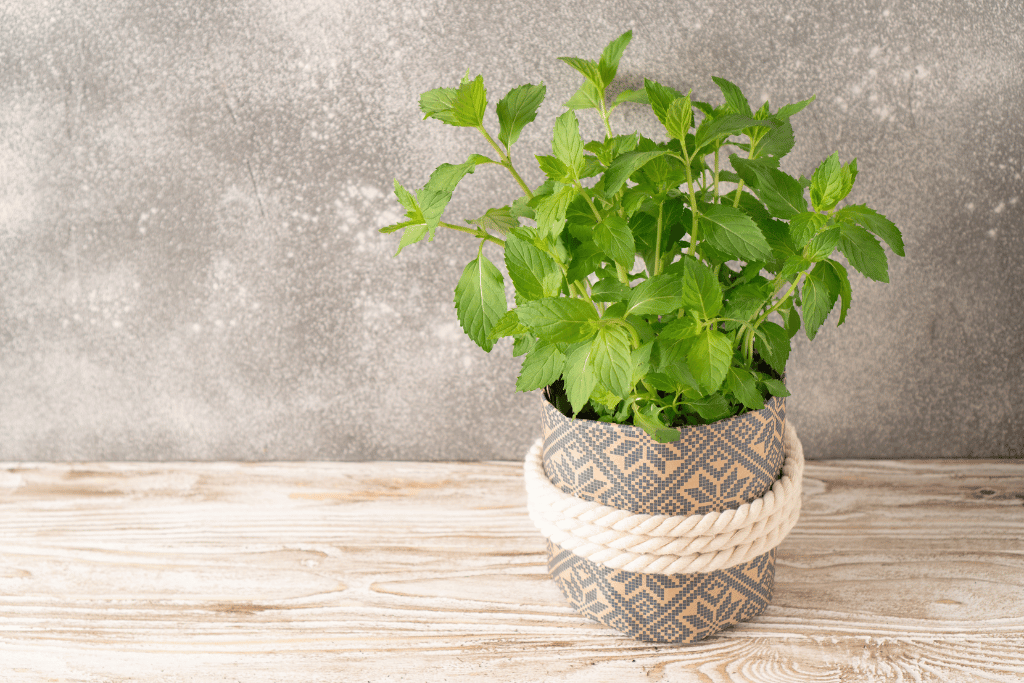
When growing mint indoors a container with drainage holes and a well-draining potting mix are both crucial.
Because mint likes moist conditions, the medium should be able to retain moisture while wicking away any excess water. The same general rule applies for mint grown indoors; the medium should be allowed to dry out in between waterings.
In most cases during the growing seasons of spring, summer and fall you can give your mint a thorough watering twice a week. As it grows rapidly, mint will appreciate the constant moisture and respond by producing vibrant, fragrant green leaves.
During hot weather, your mint may need more frequent watering. It’s always important to keep an eye on the moisture level of the soil and be careful not to overwater.
As winter is approaching, start to slowly scale back the amount of water you give your mint. The growth rate of mint will rapidly decline and it won’t need nearly as much water. Watering once a week or once every other week should be plenty during the short, cold days of winter.
With more repetitions over time, you’ll become familiar with your individual plant’s needs.
A west-facing window makes a great place to provide your indoor mint plant with plenty of bright light.
Watering Mint in Pots
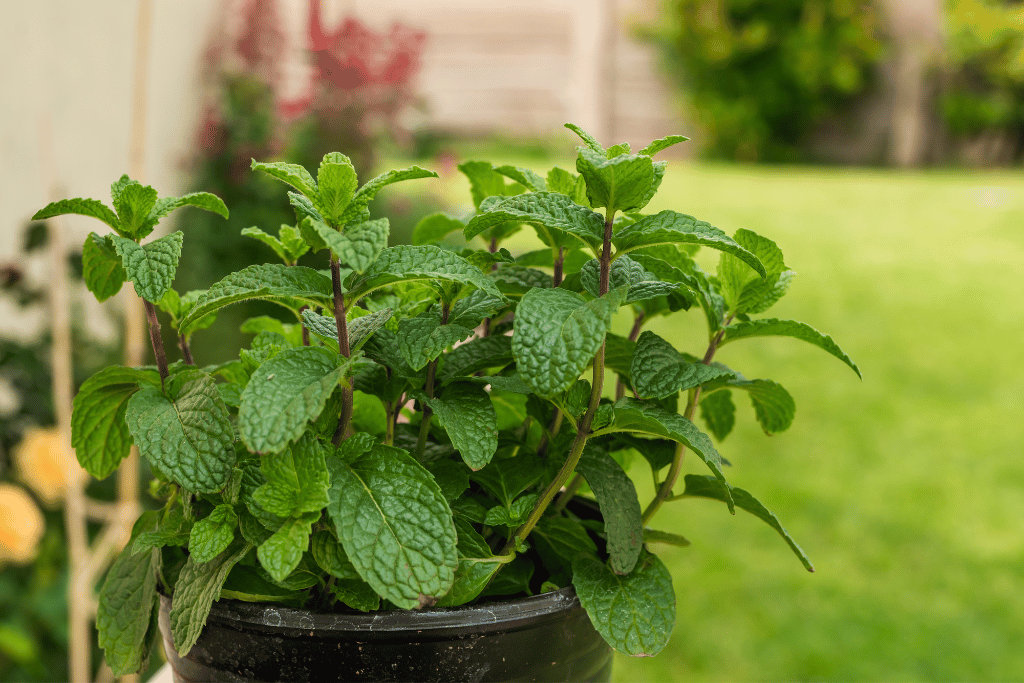
Mint plants do especially well grown in containers. It’s a great idea for outdoor garden spaces because left alone, the aggressive growing mint can easily take over entire garden beds. Scattering containers of mint plants throughout your garden space will help keep away all types of pests.
Pots have a limited amount of soil and roots that quickly warm up under the sun. Therefore, they require more frequent watering than mint kept indoors or planted directly in the garden.
You should check the moisture level of your potted mint on a daily basis, especially during hot weather. Be prepared to water your potted mint plants once, and sometimes even twice, a day during the peak heat of summer. When the top inch of the container dries out, give your mint plant a deep watering.
Variables like climate, size of the pot, location of the pot (sun or shade) and soil type will ultimately dictate how often you need to water your potted plant. That’s why it’s crucial to pay close attention to all your potted plants.
Check out this article for some other great container gardening ideas.
How Often to Water Mint Seeds and Seedlings

Mint seeds will need to stay moist at all times in order to germinate. They should be slightly covered with a seed starting mix and misted well so that the surface of the medium is soaked. Mist the seeds well every day to ensure they retain moisture.
Your seed starting tray or pots can even be covered with plastic wrap to trap in the warmth and humidity to make sure the seeds don’t dry out. The plastic covering should be removed when the seeds sprout.
Once the seedlings grow to be about an inch tall water every other day, but make sure the soil remains moist. Make sure the seed starting mix drains well so that you can water it daily without drowning the seedlings. The surface of the seed starting mix should be allowed to dry out slightly before watering again.
If your growing space is hot with plenty of circulating air, it may be necessary to water seedlings every day. However, once the seedlings are well established they will probably only need water every other day or every two days.
Watering Mint Troubleshooting
Mint tends to enjoy moist soil but won’t tolerate stagnant, standing water around its roots. This makes watering mint a little tricky to get the hang of at first. Watch out for these signals of distress in your mint plants.
Underwatered Mint
It’s easy to tell when your mint needs more water.
- Droopy leaves and an overall wilted stature of the plant will signify an underwatered plant.
- Color of the leaves might fade from a lush, deep green to a light yellowish shade of green.
If your mint has been underwatered and it’s in a container, you can perk it back up by giving it a heavy watering and setting it in a shady area until it recovers.
Mint that is planted in the ground in full sun areas should be mulched to retain moisture and help reduce evaporation.
Overwatered Mint
Too much water and constantly damp soil around your mint plant can lead to root rot and other troublesome diseases. Avoid this at all costs by making sure your soil drains well and dries out slightly in between waterings. Symptoms of overwatering include:
- Yellow leaves
- Wilting leaves
- Mildew on the leaves
- Unhealthy and dying leaves
- Dark, discolored roots
- Rotten smell
If you experience any of these symptoms, check the moisture level of the soil. If it’s damp make sure it gets plenty of time to dry out before watering again. You can dig up or repot your mint plant into a more well-lit area with better-draining soil. Inspect the roots and trim off any that are rotten or discolored.
Moisture and Drought-Tolerant Types of Mint to Grow
There are numerous species and hybrid cultivars in the genus Mentha; one of the reasons that make it such a fun, fascinating and exciting plant to grow.
Varieties of Mint That Like Lots of Water
Some mint varieties thrive in moist conditions. Try growing some of these if you live in a region that has a high water table, receives a lot of precipitation or is near bodies of water.
Peppermint (Mentha x piperita)
Peppermint prefers soil that stays evenly moist and will tolerate damp conditions better than other types of mint. It is a cross of watermint and spearmint and possesses a pleasant fragrance and pungent taste that works well for teas and desserts. Peppermint grows rapidly and can easily be propagated with cuttings.

Watermint (Mentha aquatica)
The name says it all; this variety loves moist, humid conditions. Watermint grows natively along riversides and other naturally wet areas. It is wise to grow watermint in containers, as it grows aggressively by sending out stolons that can quickly overtake a garden space. Make sure its soil is well watered and it’s in a humid atmosphere.

Banana mint (Mentha arvensis ‘Banana’)
The light purply-pink flowers of banana mint bloom straight through the summer, attracting bees and butterflies, among other beneficial bugs. The leaves of this unique variety give off a lovely banana aroma. It can be used to complement a number of sweet-tasting dishes. Prune and harvest this fruity herb often and keep it in an area that stays moist and gets partial shade.
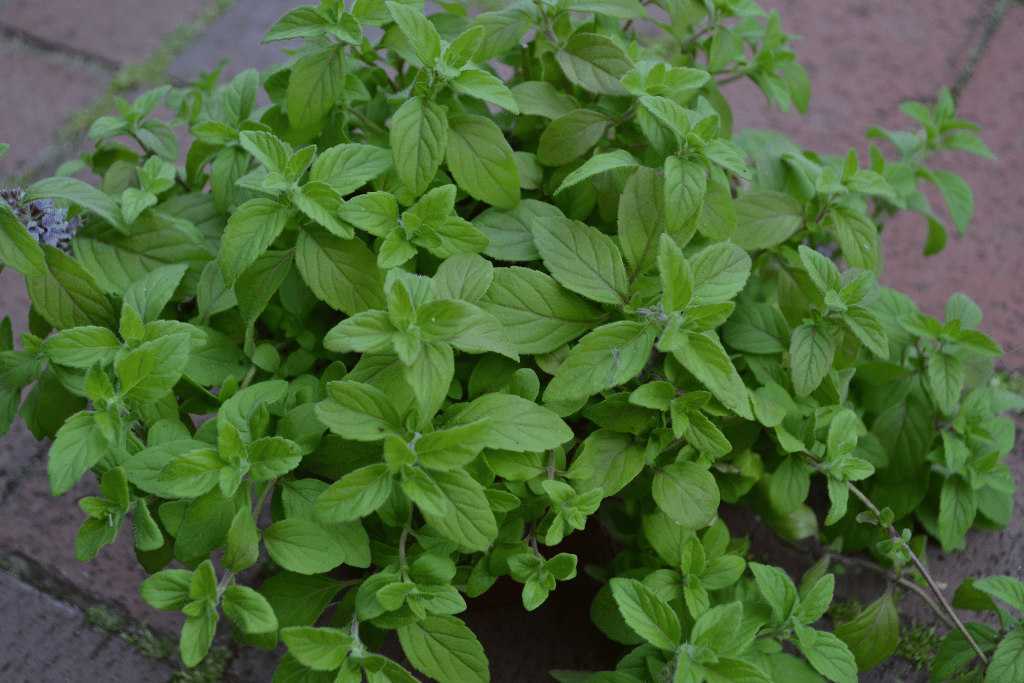
Varieties of Mint That Are Drought Tolerant
These types of mints will tolerate dry air and soil better than others. Grow these varieties if you live in warm, dry regions or, simply if you are absentminded and want a forgiving plant when it comes to maintenance and care.
Horse Mint (Mentha longifolia)
Also known as silver mint, this unique variety has prickly foliage, produces spikes of stunning pink flowers and can grow up to 4 feet tall. Horse mint is known for its many medicinal uses. It’s drought tolerant and will grow well in full sun and poor soil.

Catmint (Nepeta racemosa)
While the herb commonly known as catmint does not belong to the Mentha genus, it is of the same Lamiaceae family as other standard mint varieties. It is a useful landscaping plant to utilize as a wonderful ground cover in garden beds or along walking paths. The perennial grows vigorously year after year and blossoms with light purple flowers from late spring through fall. It’s resilient against pests, invites beneficial pollinators and is quite drought-tolerant once established.

Lemon Balm (Melissa officinalis)
Another member of the Lamiaceae family that has similar growth habits to standard mint varieties, lemon balm is a favorite in the garden. It tolerates dry conditions well once established. Lemon balm is a perennial that grows vigorously, smells incredible and makes a wonderful herbal tea.
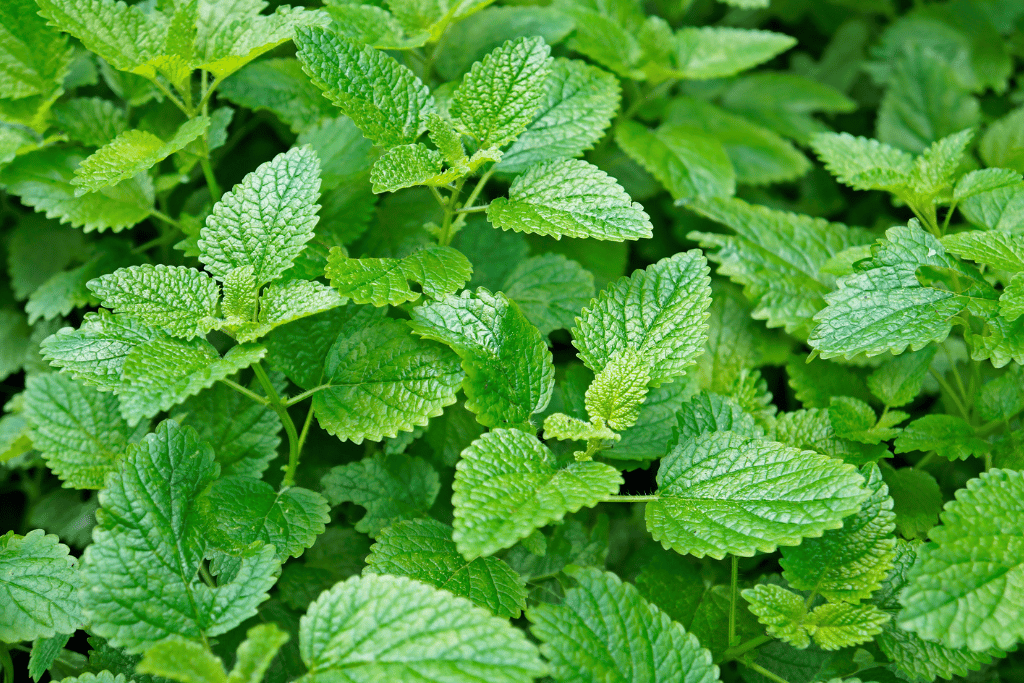
A Final Word on Watering Mint Mindfully
In general, mint is a plant that appreciates evenly moist, well-drained soil. It enjoys plenty of water to balance out its preference for abundant sunshine and warmth. By knowing the ins and outs of watering your mint in different environments, you’ll have success wherever you choose to grow it. Always pay attention to the instructions for your particular variety and tend to it accordingly.
Given mint’s ability to attract intriguing pollinators, deter pests and emit fantastic fragrances with the slightest contact, you’ll have no problem visiting it often for enjoyment. And while you’re at it, keep your mint well-watered and watch it thrive.


